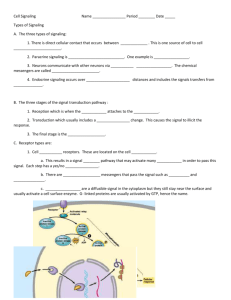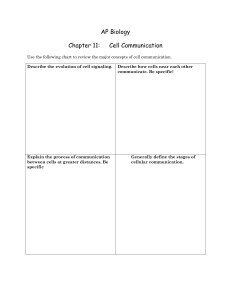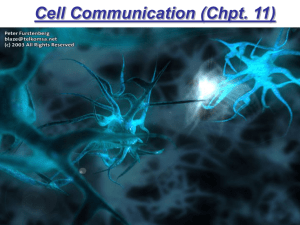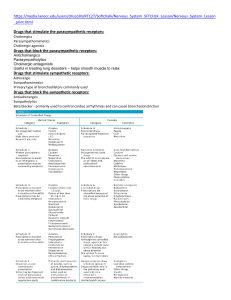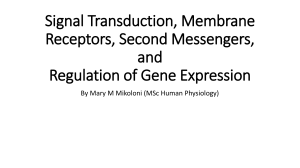Cell Communication Cell Signaling Direct Contact: Cells are
advertisement
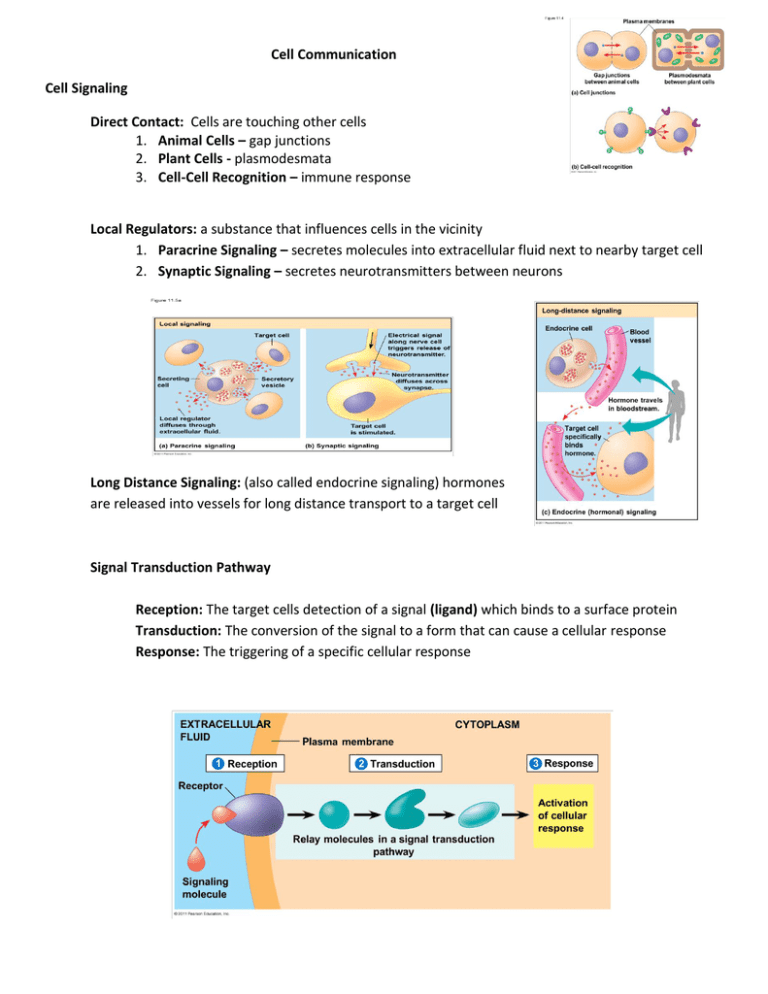
Cell Communication Cell Signaling Direct Contact: Cells are touching other cells 1. Animal Cells – gap junctions 2. Plant Cells - plasmodesmata 3. Cell-Cell Recognition – immune response Local Regulators: a substance that influences cells in the vicinity 1. Paracrine Signaling – secretes molecules into extracellular fluid next to nearby target cell 2. Synaptic Signaling – secretes neurotransmitters between neurons Long Distance Signaling: (also called endocrine signaling) hormones are released into vessels for long distance transport to a target cell Signal Transduction Pathway Reception: The target cells detection of a signal (ligand) which binds to a surface protein Transduction: The conversion of the signal to a form that can cause a cellular response Response: The triggering of a specific cellular response Types of Receptors 1. G-Protein Linked Receptors: a GTP binding protein with a secondary structure of 7 alpha-helices that acts as an on/off switch Ex. Epinephrine between neurons 2. Enzymatic Receptors: signal molecules combine to the receptors to form a dimer. Phosphates are added to the receptors. These in turn activate relay proteins which in turn activate signal transductions pathways Ex. Growth hormones on cells 3. Gated Ion Channels: protein pores that are opened or closed in response to chemical signals that allow or block specific ions Ex. Calcium intake in neurons which cause the neurotransmitter vesicles to fuse with the synaptic membrane 4. Intracellular Responses: these involve proteins that are dissolved in the cytoplasm of the cell. The signal molecules must be able to dissolve through the plasma membrane Ex. Steroid hormones Transduction: Relay signals from receptors to cellular responses. This is usually done by protein kinases (an enzyme that transfers phosphate groups from ATP to a protein) and includes the use of secondary messengers. Cellular Responses 1. Signal Amplification: increases the amount of response by a signal Ex. Glycogen breakdown by epinephrine 2. Specificity: different cells will act differently in response to the same signal molecule Ex. Epinephrine affects liver cells by causing glycogen breakdown but cause heart cells to contract

